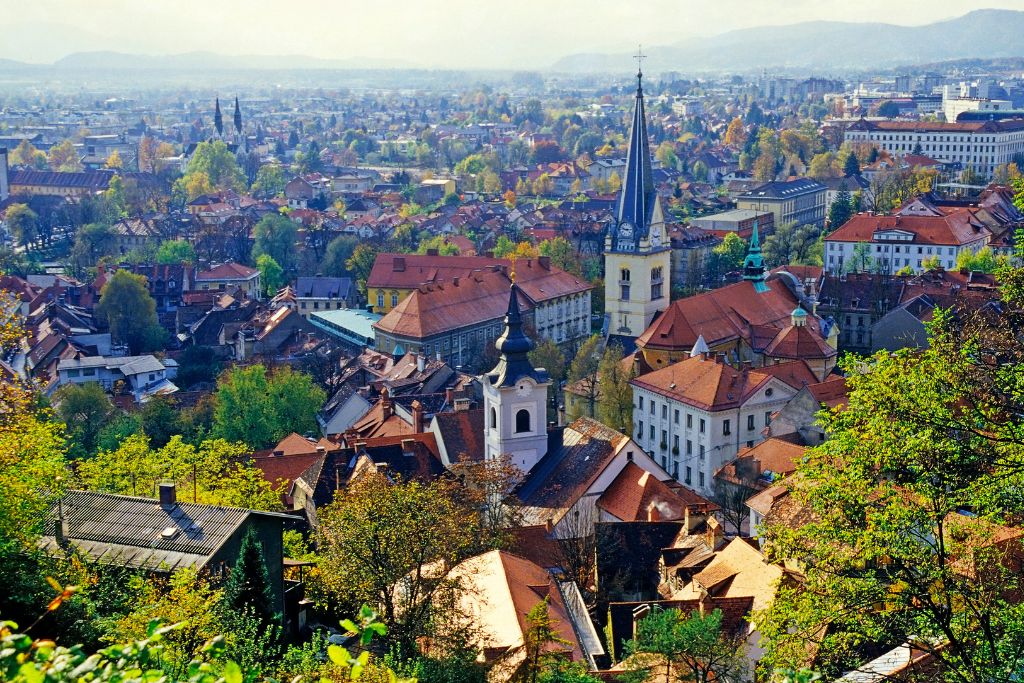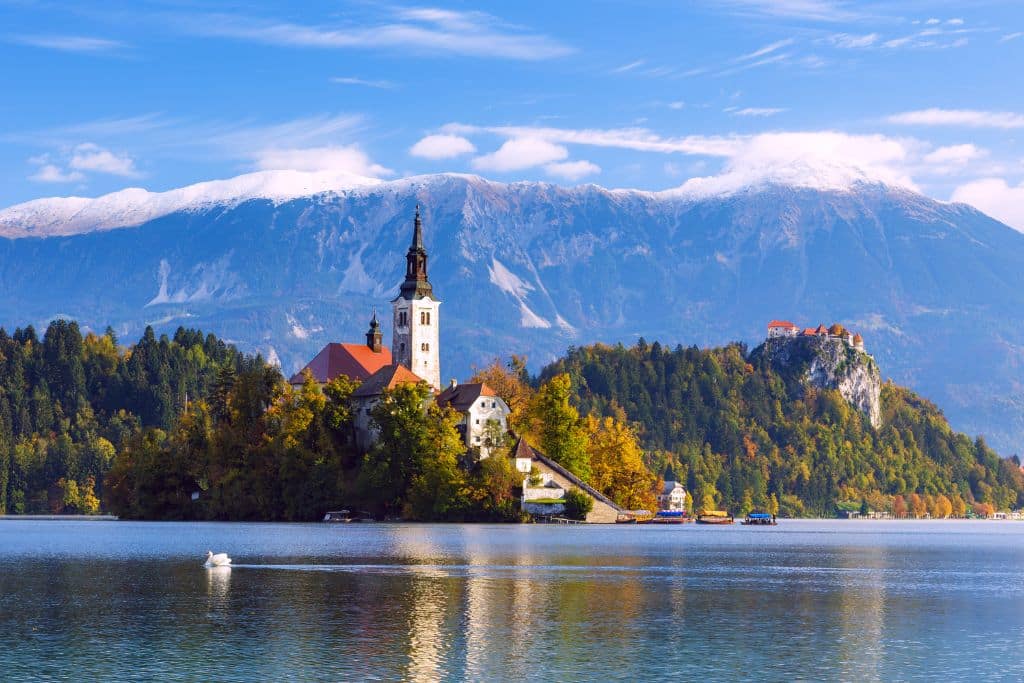Located in the heart of Europe, the country of Slovenia represents a positive example of a nation-wide awareness regarding the importance of nature. Over the course of recent years, such a mindset has put Slovenia amongst the leading countries in terms of sustainability. However, ‘the green mentality’ has not been a pure coincidence, but rather an outcome of the country’s proactive policies that have been implemented to protect Slovenia’s high biodiversity and to educate its citizens. Precisely these policies have helped Slovenia become one of the most sustainable countries in Europe and an example to follow for the rest of the world.
––
Slovenia’s High Level of Biodiversity
Despite the fact that Slovenia covers only around 20,000 square kilometres, its territory is extremely diverse, characterised by several mountain ranges (such as the Julian Alps, the Dinaric Alps, the Southern Limestone Alps), the Adriatic Sea coast, the Pannonian Plain, and the Karst Plateau – a place renowned for its majestic underground caves. The country is also particular as it is affected by three main climate types: sub-Mediterranean, temperate continental, and mountain (or highland) climate.
Thanks to the variety of ecological and climatic conditions, Slovenia is classified as a biodiversity hotspot. Whilst covering less than 0.004% of the planet’s surface, this country accommodates around 1% of the world’s biodiversity, including more than 2% of all terrestrial species. With this statistic, Slovenia has the highest concentration of animal and plant species per square kilometre in the world.
Additionally, many of the species present in Slovenia are endemic – that is, native to this country. On the one hand, there are 3,119 endemic plant species, including the Illyrian floral element – plants with limited distributions along the Dinaric Alps from Slovenia to Albania, mainly thermophilic and heliophilic endemic species – as well as several rare and threatened species. On the other hand, the fauna of this country has 18 native animals such as the Carniolan honey bee, the Lipizzaner horse, and the olm – an aquatic amphibian nicknamed ‘the baby dragon’. Slovenia is also home to three out of five species of large carnivores found in Europe: the brown bear, the grey wolf, and the Eurasian lynx. As a matter of fact, Slovenia’s population of brown bears (now at around 500 in total) has been crucial for the reintroduction of this animal throughout the entire continent.

Brown bears in a Slovenian forest (source: Ekorna Experience)
The main reason for the presence of these large carnivores in Slovenia is its extensive forest cover. Some of the latest statistics show that approximately 61% (or 12,480 square kilometres) of the country is covered in forest. However, as forests here are expanding, this could very well be an underestimation. Such a large forest area, in fact, makes Slovenia the third-most-forested country in Europe. Even urban areas are incredibly green. In the recent past, this achievement has been recognised internationally: the capital city Ljubljana was awarded Europe’s Greenest Capital in 2016 and the Tree City of the World in 2020.
You Might Also Like: What are the Biggest Causes of Biodiversity Loss?

Ljubljana, The Capital City of Slovenia
The National Green Mentality
Something that has been going hand-in-hand with the rich flora and fauna of Slovenia is the intrinsic enthusiasm for nature among its citizens. Slovenians are known as nature lovers who see their home as an extension of themselves.
There are some interesting facts that better illustrate the reason for such depiction. For example, Slovenia is considered the most passionate beekeeping country in the European Union, as there are more than 90,000 beekeepers – almost five every 1,000 people – and on the country’s initiative, the United Nations declared May 20 as World Bee Day. Furthermore, vineyards are so popular in the country that there is one for every 70 people. Lastly, the Slovenian flag contains symbols for the country’s highest point – Mount Triglav, the Adriatic Sea as well as its river and streams – of which Slovenia has almost 27,000 kilometres.
Considering the green mindset of its citizens, it should come as no surprise that Slovenia has been considered one of the most sustainable countries in the world. In 2017, it successfully completed 96 out of 100 detailed sustainability indicators regarding environment and climate, culture and authenticity, nature and biodiversity. Additionally, based on the Good Country Index, Slovenia currently ranks fourth among 169 countries in terms of positive contribution to the planet and the climate. Nevertheless, these remarkable accomplishments could not have been possible without green policies and green education, some of the aspects that Slovenia has paid great attention at.
The Green Government
Protected Areas
It is plausible to state that a country’s approach to nature could be seen in the amount of legally protected areas of its territory. The list of protected areas in Slovenia is quite long, as there are 2,260 of such locations, out of which 1,905 sites are protected under national laws, while 355 of them are classified as ‘Natura 2000′ sites – a network of nature protection areas in the European Union. Among 27 EU countries, the highest share in Natura 2000 holds Slovenia, with 37.87% of its territory being included in this conservation system.
Interestingly, the disparity in number of sites between the two protection entities is not so large since 94% of total area covered by protected areas in the country is an overlap between Natura 2000 and nationally designated sites. In terms of the country’s area, 40.4% of land and 2.48% of ocean is covered by the protected localities. Additionally, under laws enacted by the European Union, 232 species and 60 habitats in Slovenia are classified as protected.
Waste Management and Plastic Pollution
Another example of the Slovenian government’s green attitude – which also helps explaining why many consider it one of the most sustainable countries in Europe – is the adoption of a 2021 ban on nearly all single-use plastic products, including plastic cutlery, plates, straws, ear swabs, and balloon sticks. The ban also applies to food and drink packaging made of expanded polystyrene and other objects manufactures with oxo-degradable plastic.
This law, which was originally created as a EU directive, also established new rules for the labelling of certain disposable plastic products and their packaging, including tampons, pads, wet wipes, and smoking products with filters. The hope is that these new guidelines will facilitate product disposal and raise awareness among consumers. Such a responsible attitude towards waste has been noticeable in Slovenia for quite some time. A good example of that is the fact that, in 2014, Ljubljana became the first European capital to commit to going zero-waste.
During the last ten years, Slovenia developed sustainable forms of tourism as well. Most notably, the Slovenian Tourist Board created the Green Scheme of Slovenian Tourism (GSST), a roadmap to develop and promote sustainable tourism in the country. Specifically, GSST has three main goals: to bring together all efforts directed towards the sustainable development of tourism in Slovenia; to offer tools to destinations and service providers that enable them to evaluate and improve their sustainability endeavours; and to promote these green endeavours through the Slovenia Green brand. To accomplish all of the targets, GSST has established a network of destinations and service providers certified as ‘sustainable’ under the Green Scheme.
Education
One final aspect of government policies that has contributed to turning Slovenia in one of Europe’s most sustainable countries is related to education. In recent years, sustainability has become a focal point of the country’s education system and education for sustainable development has been incorporated in the curriculum at all levels of formal education, from kindergartens to universities, through national regulatory documents.
For instance, the Organisation and Financing of Education Act that was passed in 2008, “sets as an aim education for sustainable development and active social integration in the democratic process, in-depth knowledge and liable attitude towards oneself, own health, others, own and other cultures, natural and social environment, and towards future generations.”
A similar goal was set forth in the Act on Changes and Supplementations of Primary School Act passed in 2007 as well as in the 2011 White Paper on Education, which explicitly states that “sustainable development is the main standpoint of education and the main educational goal” – hence the schools – “should develop students’ knowledge, attitudes and personal commitment towards the environment.”
In addition to the classroom, the Slovenian school system also includes obligatory forms of outdoor and environmental education. Specifically, according to the Basic School Act of 1996: “Outdoor education is integrated into the national curriculum for primary and lower secondary education”. Furthermore, throughout their nine-year compulsory education, all students must attend several events dedicated to cultural, sports, science and technical activities, as well as an a series of days dedicated to outdoor activities. All events are fully funded by the government and they allow children to learn about nature from a very young age, developing a strong connection and appreciation for it.
Aside from the traditional school system which – as discussed above – has had a regulated system of sustainable education, a growing number of institutions in Slovenia has been taking a ‘green step’ further. Namely, as of the 2018/19 school year, 722 institutions comprising 35% of all the country’s schools with over 130,000 children and 8,500 teachers were registered in the Eco-School system. This international programme is the “largest network of children, pupils, students and teachers, which promotes the systematic implementation of environmental and sustainable contents and the implementation of sustainable development principles in educational institutions” and it has been present in Slovenia since 1996. Having the support of the European Commission and the United Nations, the Eco-School has a mission of helping schools become sustainable and teaching good habits to young students who are then, furthermore, able to spread those learned practices into their homes and communities.
However, Slovenia does not solely focus on integrating ‘green education’ in its official school system. Instead, specific programmes have been developed for the wide public. Most recently, one such project, named Life Naturaviva has been organised by the National Institute of Biology and its nine partners – including five Slovenian natural parks – from September 2017 to August 2022. The main goal of the programme is to reveal the exceptional values of nature and to highlight the threats that biodiversity in Slovenia faces.

Triglav National Park (source: explore-share)
Life Naturaviva aims to reach various groups of the public, from children and students to farmers and politicians. Co-financed by the European Union’s Financial Instrument for Environment and Climate Actions and the Slovenian Ministry of the Environment and Spatial Planning, the project offers fairs, exhibitions and environmental days, summer school for students, workshops for high school teachers, as well as lectures for farmers and agricultural promoters.
Leading the Way in Sustainability
With the continuous effort to educate the entire population about its high biodiversity and the potential threats to it, Slovenia has been able to become one of the most sustainable countries in Europe. This relatively small state has utilised various methods of education and protection of the environment, creating a collective sense of pride and awareness regarding the importance of nature. Nothing better confirms this hypothesis but the fact that Slovenia is the first country in the world “to have been, in its entirety, declared a Green Destination of the World.” Therefore, the recommendation for everybody is to visit one of the world’s top sustainable nations and, most importantly, to urge policy-makers in their own countries to follow the great example that Slovenia has laid out for us.
You Might Also Like: How Sustainable Cities like Singapore Succeed in Green Urban Development


















